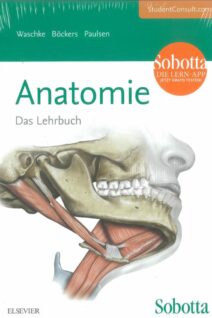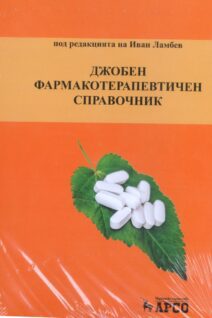Get the essential pharmacology information you need from one authoritative source with an outstanding global reputation for excellence.
Progress confidently through all relevant aspects of pharmacology, beginning with a molecular understanding of receptors and drug actions through clinical uses of key groups of drugs.
Find important content quickly thanks to a color-coded layout that enables easy navigation and cross-referencing.
Master difficult concepts with Key Points boxes, Clinical Uses boxes, and full-color illustrations throughout.
Stay up to date with new information in the field, including an all-new chapter on drugs that affect the skin.
Take advantage of new and unique features online, including 500+ chapter-specific multiple choice questions for immediate self-assessment.
eBook version included! For the first time, you can access the entire book online or offline across all devices with the Student Consult eBook!
Build your basic and clinical pharmacology knowledge with a comprehensive yet easy-to-use text
Rang & Dale’s Pharmacology provides you with all the knowledge you need to get through your pharmacology course and beyond. Drs. Humphrey P. Rang, Maureen M. Dale, James M. Ritter, Rod Flower, and Graeme Henderson present a clear and accessible approach to the analysis of therapeutic agents at the cellular and molecular level through detailed diagrams, full-color illustrations, and pedagogical features.
- Find and cross-reference information quickly мк.лusing a color-coded layout that makes navigation easy.
- Effectively understand and review key concepts through detailed diagrams and full-color illustrations that clarify even the most complex concepts.
- Reinforce your learning with key points boxes and clinical uses boxes that highlight crucial information and clinical applications.
- Apply current best practices and clinical applications through thoroughly updated and revised drug information.
- Stay current with the latest developments in the field thanks to major updates in chapters such as How Drugs Act; Amino Acid Transmitters; Analgesic Drugs; Antidepressant Drugs; and Drug Addiction, Dependence & Abuse.
- Tap into comprehensive content tailored to your courses with new and reorganized chapters on Host Defense; Inflammatory Mediators; Pharmacogenetics, Pharmacogenomics & Personalized Medicine; Hydroxytoptomine & The Pharmacy of Migraine; and Purines.
Rang & Dale’s Pharmacology
8th Edition
Authors: James Ritter Rod FlowerGraeme Henderson Humphrey RangPaperback ISBN: 9780702053634Paperback ISBN: 9780702053627eBook ISBN: 9780702067020eBook ISBN: 9780702054976eBook ISBN: 9780702067365eBook ISBN: 9780702067341Imprint: Churchill LivingstonePublished Date: 21st January 2015Page Count: 776Section 1: General principles
1. What is pharmacology?
2. How drugs act: general principles
3. How drugs act: molecular aspects
4. How drugs act: cellular aspects—excitation, contraction and secretion
5. Cell proliferation, apoptosis, repair and regeneration
6. Cellular mechanisms: host defence
7. Method and measurement in pharmacology
8. Drug absorption and distribution
9. Drug metabolism and elimination
10. Pharmacokinetics
11. Pharmacogenetics, pharmacogenomics and ‘personalised medicine’
Section 2: Chemical mediators
12. Chemical mediators and the autonomic nervous system
13. Cholinergic transmission
14. Noradrenergic transmission
15. 5-Hydroxytryptamine and the pharmacology of migraine
16. Purines
17. Local hormones: cytokines, biologically active lipids, amines and peptides
18. Cannabinoids
19. Peptides and proteins as mediators
20. Nitric oxide
Section 3: Drugs affecting major organ systems
21. The heart
22. The vascular system
23. Atherosclerosis and lipoprotein metabolism
24. Haemostasis and thrombosis
25. Haemopoietic system and treatment of anaemia
26. Anti-inflammatory and immunosuppressant drugs
27. The respiratory system
28. The kidney
29. The gastrointestinal tract
30. The control of blood glucose and drug treatment of diabetes mellitus
31. Obesity
32. The pituitary and the adrenal cortex
33. The thyroid
34. The reproductive system
35. Bone metabolism
Section 4: The nervous system
36. Chemical transmission and drug action in the central nervous system
37. Amino acid transmitters
38. Other transmitters and modulators
39. Neurodegenerative diseases
40. General anaesthetic agents
41. Analgesic drugs
42. Local anaesthetics and other drugs affecting sodium channels
43. Anxiolytic and hypnotic drugs
44. Antiepileptic drugs
45. Antipsychotic drugs
46. Antidepressant drugs
47. CNS stimulants and psychotomimetic drugs
48. Drug addiction, dependence and abuse
Section 5: Drugs used for the treatment of infections, cancer and immunological disorders
49. Basic principles of antimicrobial chemotherapy
50. Antibacterial drugs
51. Antiviral drugs
52. Antifungal drugs
53. Antiprotozoal drugs
54. Anthelminthic drugs
55. Anticancer drugs
Section 6: Special topics
56. Individual variation and drug interaction
57. Harmful effects of drugs
58. Lifestyle drugs and drugs in sport
59. Biopharmaceuticals and gene therapy
60. Drug discovery and development












